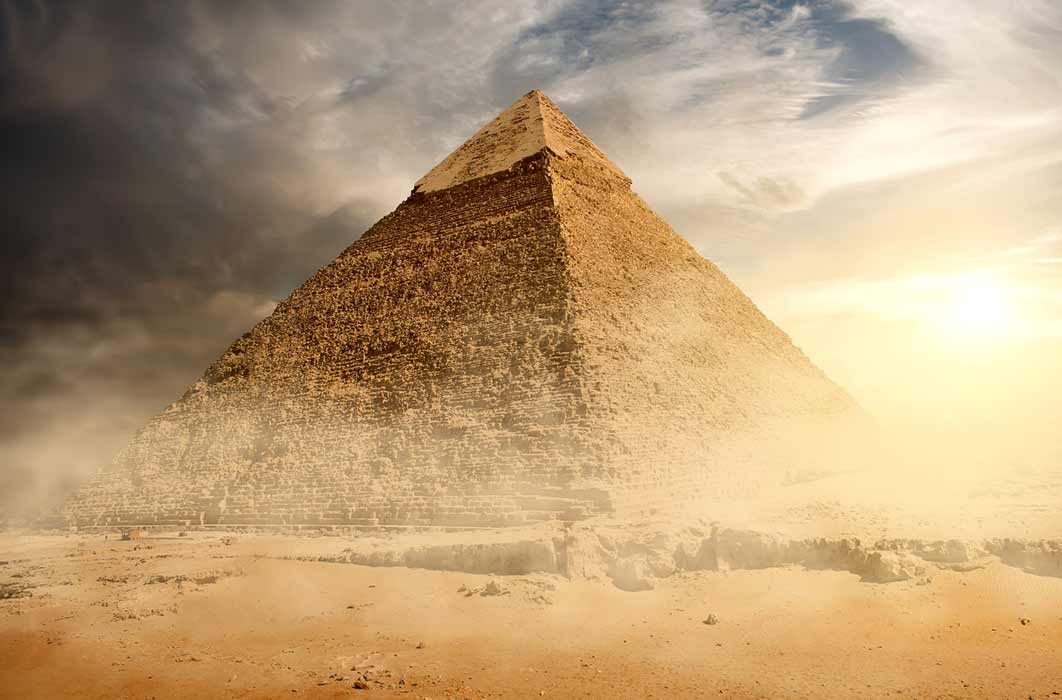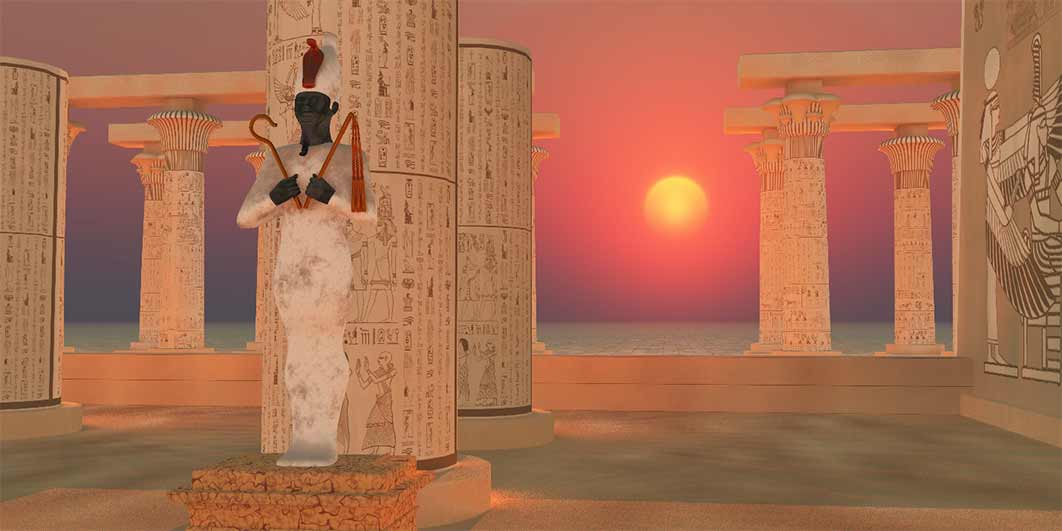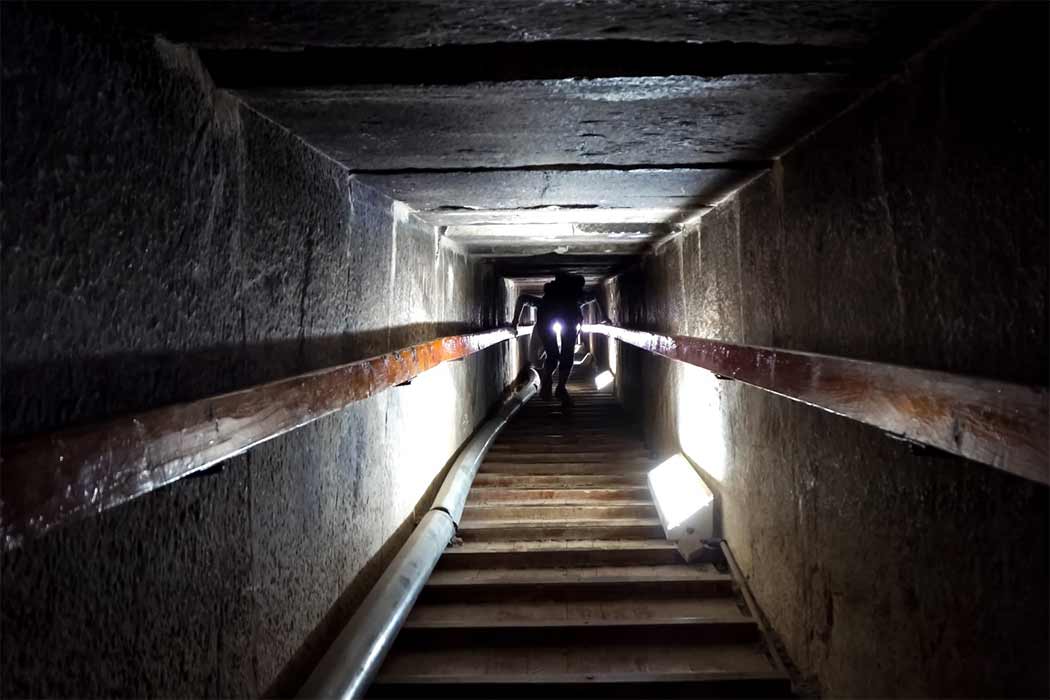
The Great Pyramid Of Giza Enacting The Rite Of Rebirth
In Egypt, the pharaoh, who was the living incarnation of Horus, the son of Isis and Osiris, would undergo at death a transformation from being the living Horus to being the dead and resurrected Osiris. Pharaoh was, by inheritance, the anointed king-god of his people: in essence he was the equivalent of the Greek Christos, a messiah.

Osiris God Statue - The Egyptian god of resurrection and the afterlife Osiris stands as a statue in a temple in the desert. (Catmando/ Adobe Stock)
The word ‘pharaoh’ means literally ‘great house’. Throughout human history dynastic lineages have always been referred to as houses—the house of David is a case in point. This architectural term denotes the idea that the lineage descends from the gods—who reside in temples, and therefore, the origin of the line is divine. In the case of David and Solomon it was the tabernacle and then the Jerusalem temple. In the case of the pharaohs it can only mean the most revered monument in Egyptian history—and the most sacred place in its history: the Great Pyramid. The pyramid is Osiris; therefore the pharaoh, as Osiris’ son Horus, has to be referencing this extraordinary monument as the meaning of his title; and as the anointed Son of God, he is also the master of its liturgy and ritual.
During his sojourn in the King’s Chamber, John Reid discovered that the mysterious sarcophagus there shares the same resonant frequency as the heart of a newborn baby. This remarkable fact immediately points only in one direction.

Shafts Inside the Great pyramid. (hlxandr / Adobe Stock)
The Ovule In The Pyramid
Running in an outward direction from the interior of both the King’s and Queen’s Chambers in the Great Pyramid are four so-called ventilation shafts. There are two in each chamber. One of the shafts in the Great Pyramid was until very recently ovular in form. The two shafts do not run directly from the interior and outward; there is first a small entrance chamber at the end of which the shafts begin their ascent. When in the mid-1990s one of the shafts in the King’s Chamber was earmarked for a new ventilation fan, in an attempt to control the humidity and keep the interior temperature constant, not much attention was paid to the symbolic nature of its form: its shape was duly destroyed after only a rudimentary survey was made and the form is forever lost. However, the shape remains intriguing.
- Zep Tepi and the Djed Mystery: Backbone of Osiris - Part I
- Ancient Egyptian Creation Myths: Lords of the Earth and Sky, Scarab God Khepera, and Lady of Slaughter
- Life after Life: In the Quest for Eternity, Death is Only the Beginning – Part I
The seed/ovule/egg symbolism ties in very nicely with the rebirth symbolism of the pyramid as a whole. The inference being that resonance plays a prime role in the atmosphere of both the King’s and Queen’s Chamber interiors.





